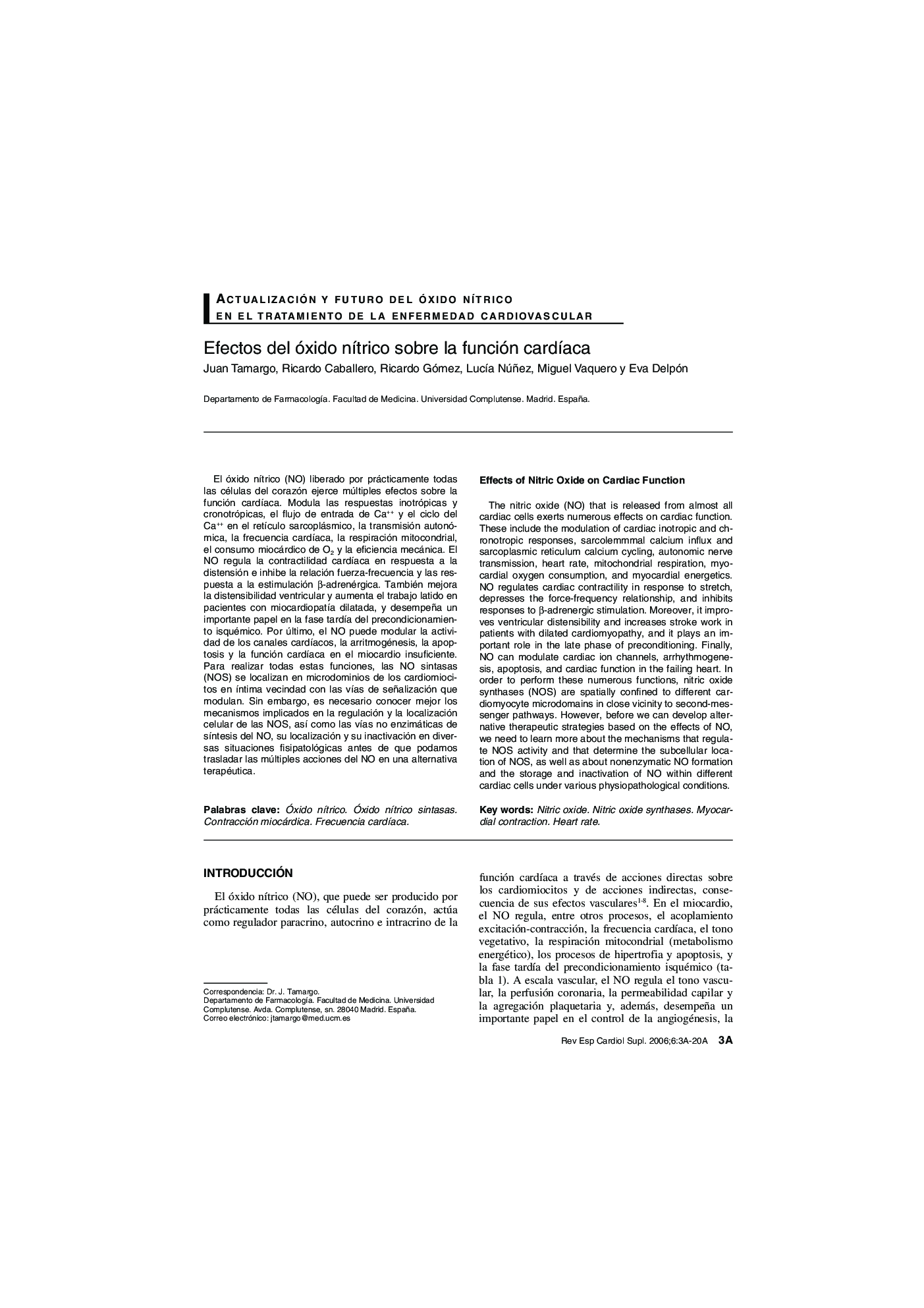| Article ID | Journal | Published Year | Pages | File Type |
|---|---|---|---|---|
| 3019761 | Revista Española de Cardiología Suplementos | 2006 | 18 Pages |
Abstract
The nitric oxide (NO) that is released from almost all cardiac cells exerts numerous effects on cardiac function. These include the modulation of cardiac inotropic and chronotropic responses, sarcolemmmal calcium influx and sarcoplasmic reticulum calcium cycling, autonomic nerve transmission, heart rate, mitochondrial respiration, myocardial oxygen consumption, and myocardial energetics. NO regulates cardiac contractility in response to stretch, depresses the force-frequency relationship, and inhibits responses to Ã-adrenergic stimulation. Moreover, it improves ventricular distensibility and increases stroke work in patients with dilated cardiomyopathy, and it plays an important role in the late phase of preconditioning. Finally, NO can modulate cardiac ion channels, arrhythmogenesis, apoptosis, and cardiac function in the failing heart. In order to perform these numerous functions, nitric oxide synthases (NOS) are spatially confined to different cardiomyocyte microdomains in close vicinity to second-messenger pathways. However, before we can develop alternative therapeutic strategies based on the effects of NO, we need to learn more about the mechanisms that regulate NOS activity and that determine the subcellular location of NOS, as well as about nonenzymatic NO formation and the storage and inactivation of NO within different cardiac cells under various physiopathological conditions.
Keywords
MVO2RFF[Ca++]iRM2ASK-1SERCA2aGCsMCDNOSLPSRyR2PDEdP/dtmaxAChAktacetilcolinamyocardial contractionContracción miocárdicaÓxido nítricoventrículo izquierdocélulas endotelialesNitric oxide synthasesFrecuencia cardíacaHeart rateInsuficiencia cardiacaNoradrenalinaNitric oxidemiocardiopatía dilatadaapoptosis signal-regulating kinase 1
Related Topics
Health Sciences
Medicine and Dentistry
Cardiology and Cardiovascular Medicine
Authors
Juan Tamargo, Ricardo Caballero, Ricardo Gómez, LucÃa Núñez, Miguel Vaquero, Eva Delpón,
